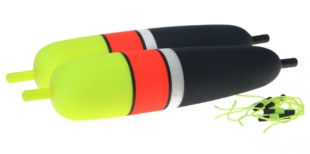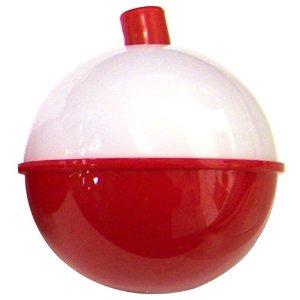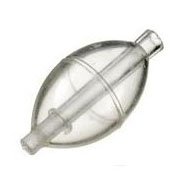Selecting the Right Bobber Leave a reply
With opening day of trout season just a few days away there’s going to be a lot, and I mean a LOT of bobbers flying off the shelves of local tackle shops this week. Like most items these days there are quite a few different styles of bobbers out there and where does the beginner start?
Case in point. I’m kicking around one of my favorite tackle shops the other day and I ran into two guys foraging thru the floats wondering which ones to purchase for opening day. They look somewhat dismayed at the array of bobbers in front of them and I just couldn’t help myself. I stopped and quickly showed them the different styles of floats, handed them the ones they needed, and went about my bidness.
It didn’t take long for the crusty old gears in my cranium to say…”hey, that’s a pretty easy blog.” So, here’s a quick rundown of the different float styles and where you might use them.
Sliding or “Slip” Float
Just as the name implies this type of float actually slides up and down the main line and requires a bobber-stop above it to adjust the depth. Sliding floats allow an angler to fish much deeper water than could normally be fished with a fixed float.
The bobber stop can be adjusted to just about any depth desired and can be reeled onto the spool when a fish is hooked. These floats come in many shapes and sizes and it’s important to select the correct size float for the amount of weight that will be under it. Use a small float with too much weight and it’ll be underwater fast. Sliding floats are very popular with salmon and steelhead fisherman.
Fixed Float
The most commonly used fixed float clips onto the main line and is best used for shallow water. These floats are usually red and white and have spring loaded clips on each end. Thousands of these floats are sold every year on opening day of trout season because they are inexpensive and easy to use.

Adjusting this style of float requires removing it from the mainline and re-attaching it to adjust the depth. Fixed floats work excellent under the right conditions and are very simple to use. These bobbers usually break easily, however, and can freeze in cold weather, making them difficult to use in extreme winter conditions.
Another fixed-style bobber that’s used frequently by salmon and steelhead fisherman is a Dink float. These floats are made of closed cell foam and the line wraps around the float to hold it in place.
There are many other styles of stick-type fixed floats that used by crappie, carp, salmon, and steelhead fisherman. It’s simply a matter of deciding how technical the presentation needs to be and then matching it up with the correct fixed float for the job.
Clear Floats
The “Adjust-a-Bubble” is the most common clear float on the market, but there are several other styles that also work. Clear floats work great for fishing flies and can be filled partially with water to give them additional weight for casting. We used to catch plenty of trout on the I-82 ponds near Ellensburg, Washington using this style of float back in college. By filling the bobber part way with water we could reach a lot further out in the ponds than we ever could with a fly rod.
The Right Size Float
It’s best to adjust the size of the bobber to the fish being targeted and to the size of bait being used. Detecting the subtle bite of a trout, for instance, can be very difficult using a large bobber. It’s generally best to use the smallest bobber possible to float the bait or jig and still keep at least half of the bobber above the surface. The larger the bait being used the larger the bobber.
Saturday’s the big day! Hopefully you have all the split shot, hooks, bait, bobbers, and fishing licenses you’ll need to make it a fun day for the whole darned family. If you have questions please don’t hesitate to post them in the Outdoor Line Fishing Community. You’ll have an answer quickly!
Rob Endsley
The Outdoor Line
710 ESPN Seattle
www.theoutdoorline.com

